Whether you are looking for a new type of fruit to try, organising a pink party or looking up a list of pink fruits for your word puzzle or a quiz, I’ve put together a comprehensive list of pink fruits you will love!
My pink fruits list is also great if you are looking for pink foods to link to the Breast Cancer Awareness Month (1 October – 31 October 2023 each year) and if you are preparing various events, fundraising or charity parties that month.
For the purpose of this blog post, I looked at pink fruits that are either pink on the outside or pink inside. The shade of pink and the intensity also varies, but I tried my best to pick fruits that fit this requirement. I’ve also included how to use these pink fruits and my favourite recipes too.
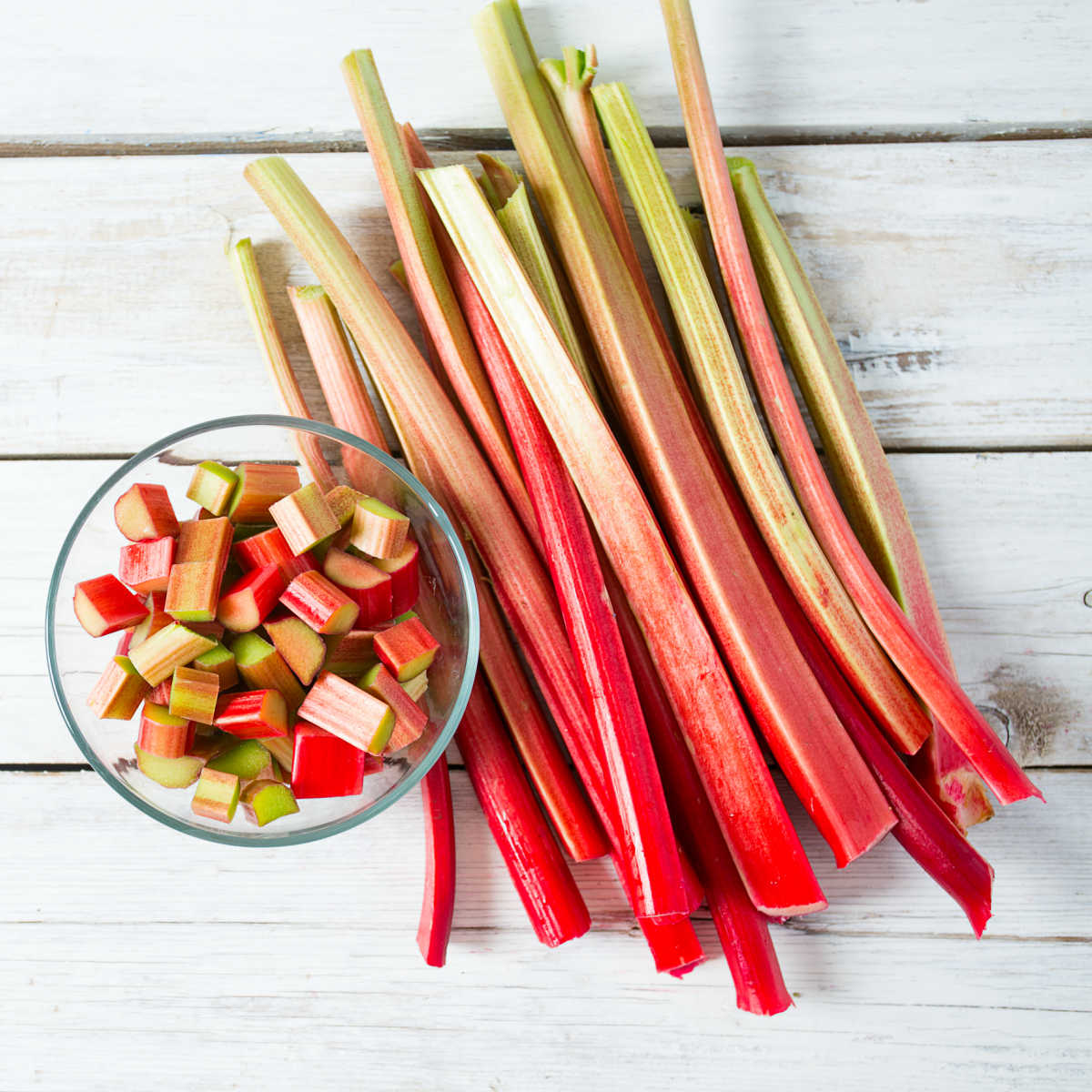
The most common pink fruits that are pink inside include watermelon, rhubarb, pink grapefruit or pink apples, and pink muscatel grapes. There are also some fairy exotic pink fruits, that you might not know, such as water guava, dragon fruits, cactus pear, pink banana or pearl apples.
Some fruits might be on the borderline between pink and red colour, so I’ve not included them. To me pomegranate or cranberries are just way too dark to be considered to be pink and most of the ones I’ve used to cook and bake with are a deep rich burgundy colour. But if you get a quiz question, you know they can also be considered.
Strawberries or wild strawberries also look (to me) more red than pink, so I’ve not included them. If they are are pink, they are usually not ripened and not ready to be picked.
I have also included only pink fruits that are widely edible and don’t cause digestive problems. For example pink snowberry as lovely as they look are also toxic if eaten in larger quantities. They can, however, be used as a home remedy for irritated skin and also eaten in very small quantities to aid good bowel movement.
I’ve ordered my list of pink fruits from the most common groups to some of the rarer types of pink fruits.
Watermelon
Watermelon is one of the most widely available pink fruits and one that’s probably most affordable, especially in the summer. Watermelons are great to eat as they are perfect for a hot summer’s days, as they contain 90% water.
You can also use watermelons for mixed fruit salads, add them to smoothies (making sure you take the pips out) or lightly infuse water with them. Watermelons don’t have a very strong flavour, so when I’m using them to infuse water, I always some lemon juice.
Area of origin – Northen Africa, but widely grown in USA, UK, Europe and other countries.
Pink Muscatel Grapes
While we might think think that traditional grapes are purple, there is a type of grapes that have a beautiful pink colour. The Muscatel Grapes have a wonderful light taste and they are quite sweet, but also have floral notes.
Rhubarb
Lightly pink and green on the top and pale coloured yellow with pink hues inside, rhubarb is one of my favourite pink fruits.
Rhubarb has a fairly short growing season from March or April to June (in the northern hemisphere such as USA, UK or Europe) and late autumn in Australia and New Zealand.
Rhubarb is great for making jams, cakes, pie fillings and refreshing sorbets.
Pink Lady Apples
This variety of apple was originally grown by apple growers in Australia in 1973. Whilst the apples can be grown in other countries, they are all subject to licencing rights that are still owned by the original owner’s family of John Cripps.
They taste light and sweet with a slight tang and can be used in any way you would normally use apples. Pink Lady apples are slightly more expensive than regular apples, so I usually just eat them fresh, rather than to bake or cook, but you certainly could if you wanted to.
- Apple & Cinnamon Muffins Recipe >>
- Apple Tea Recipe >>
- Homemade Apple Sauce Recipe (Sweet) >>
- Oatmeal with Apples >>
Pink Grapefruit
Pink grapefruits are slightly sweeter than yellow or white grapefruits, but an equally great source of vitamin C. Pink grapefruits are eaten fresh as part of a healthy breakfast and you can add them to your fruit juices or smoothies.
The fleshy rind is also perfect for making marmalade, which unlike Seville Oranges ( in season only for a very short few weeks a year), can be made any time of the year.
Peach
Peaches have a soft pink colour on the outside, but usually are light yellow on the inside. They are originally from China, but widely grown in USA, UK and the whole of Europe.
Peaches have a delicate flavour, which is best enjoyed when eaten fresh, but you can also makes some excellent cakes with peaches, pies or sorbets.
Fresh Figs
Althought fresh figs are dark purple on the outside, they are pink on the inside, when you cut through them. Figs are originally grown in warm countries such as Morocco, Turkey or Egypt, but you can often see fig trees in other countries in Europe and USA.
Fresh figs are great lightly baked and then served with summer salads or meats. You can also make them into jams, marmalades and pie fillings. You can buy dried figs any time of the year and use them for baking or making various marinades for meats.
Pink Raspberries
Pink raspberries are slightly lighter in colour than traditional raspberries and have a more delicate flavour.
They can be used in exactly the same way as regular raspberries and they look amazing as toppings on cakes, overnight oats and breakfast pancakes.
I’ve used them instead of strawberries in my Shortcake in Mug for one recipe and the flavour (when pear up with vanilla or lemon essence) is really lovely.
Pink Peppercorn
While you might not necessarily think about peppercorns as being ‘fruit’ (since they are more savoury and we use them to flavour dishes rather to eat on their own), pink peppercorns are indeed ‘fruits’ and grow on trees or bushes.
The pink fruits are then dried and when crushed they have a similar flavour to regular peppercorns. The flavour is much lighter and fruitier, which is why I usually use them in my chocolate making (pink peppercorn is perfect with white chocolate) or adding to smoothies to spice up (a little) bland flavours.
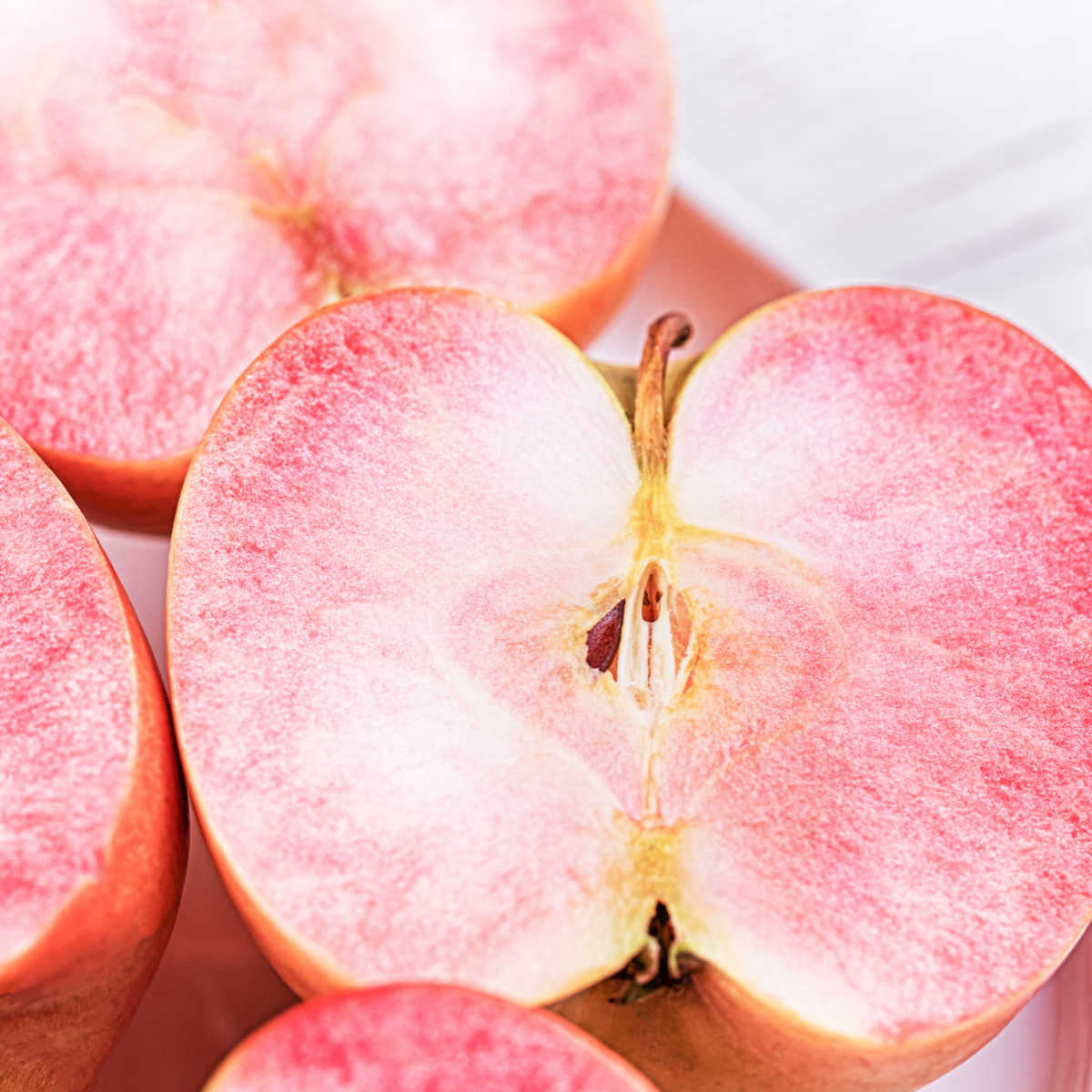
Pink Pearl Apples
There are only a few apples that are actually pink inside and the pearl apples are one of them. Originally from sunny California, where they were cross bred from other red apples in 1944 by Albert Etter. Pearl Apples have a sweet flavour and are quite juicy with a slightly tarty tang to them.
Another variation of Pink Pear Apple is Pink Princess, which has much darker pink flesh inside and probably should be another number on our list!
The name for the Pink Princess was originally ‘Pink Lady’, but because the apple grower didn’t trademarked the name, the current ‘Pink Lady’ took that name in 1973 and the owner trademarked it.
Cara Cara Orange
While regular oranges are orange in colour, Cara cara orange is lightly pink inside. Cara cara oranges are slightly sweeter than traditional oranges and can be used in exactly the same way as normal oranges.
Pink Passion Fruit
A lot of passion fruits can be purple or deep red, but there are also varieties that have a pink colour on the outside and light pink inside the white flesh.
The passion fruit pulp inside is always bright yellow with green/black seeds inside. Passion Fruit is a tropical plant originally from South America, mainly Brazil, Argentina, Bolivia or Paraquay.
Passion Fruit pulp and the seeds can be eaten fresh or are often made into fruit curds, jams, syrups and coulis.
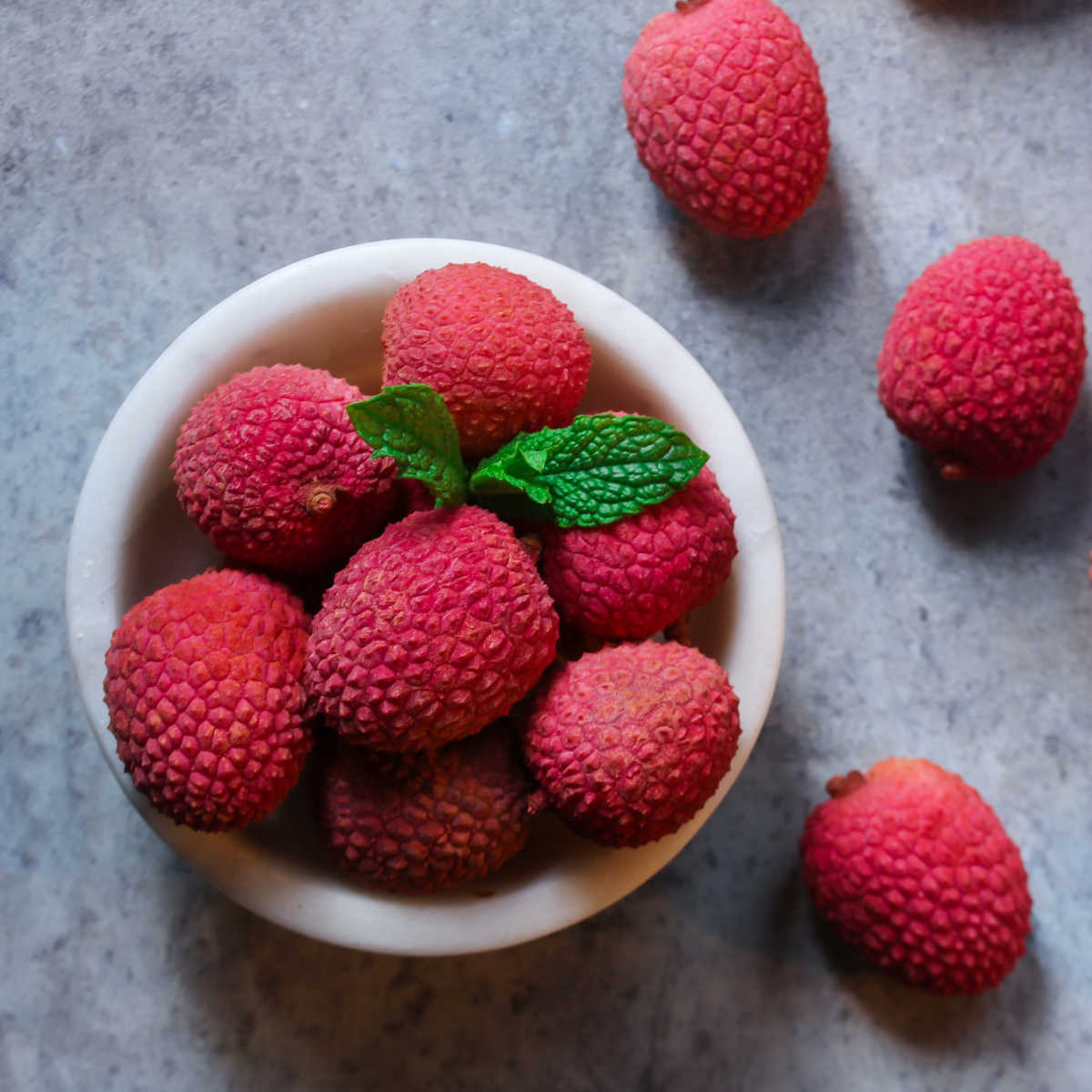
Lychee
In recent years, I’ve noticed that fresh lychees have become more available in regular shops. This tropical fruit originally from Southeast Asia is bright pink on the outside and white with pink hues inside.
Lychee is a little bit bigger than a grape. The edible part is the white inside skin, the large seed inside is inedible and needs to be removed as well as the pink skin.
Lychees are perfect as as they are – eaten fresh or added to fruit salads or toppings for various deserts. You can also buy canned (tinned) lychees, which are already pealed and preserved in their own juice or sugar syrup.
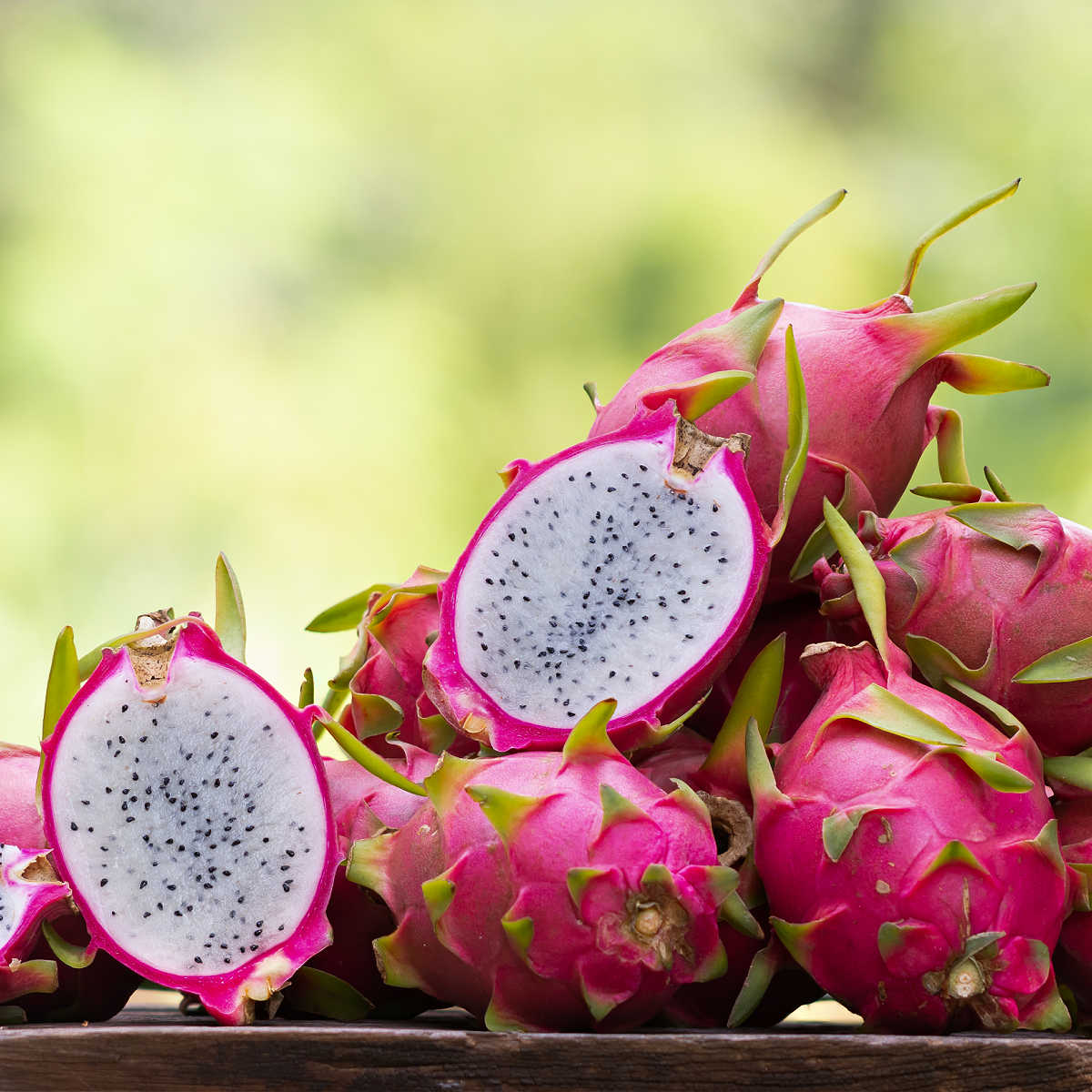
Dragon Fruit
Dragon fruit is one of the fruits on my list, that’s pink on the outside only, but what a shade of amazing pink it is!
The inside of dragon fruit is white with small black seeds, but I’ve also seen dark pink (more like purple) versions of dragon fruits. The magical name comes from the fruit’s likeness to mythological dragons in Chinese stories and legends.
You can eat dragon fruit fresh (it tastes quite sweet, but it’s surprisingly low in calories) or mix it into fruit salads or use it as a topping for cold desserts, chocolate mousses or breakfast overnight oats.
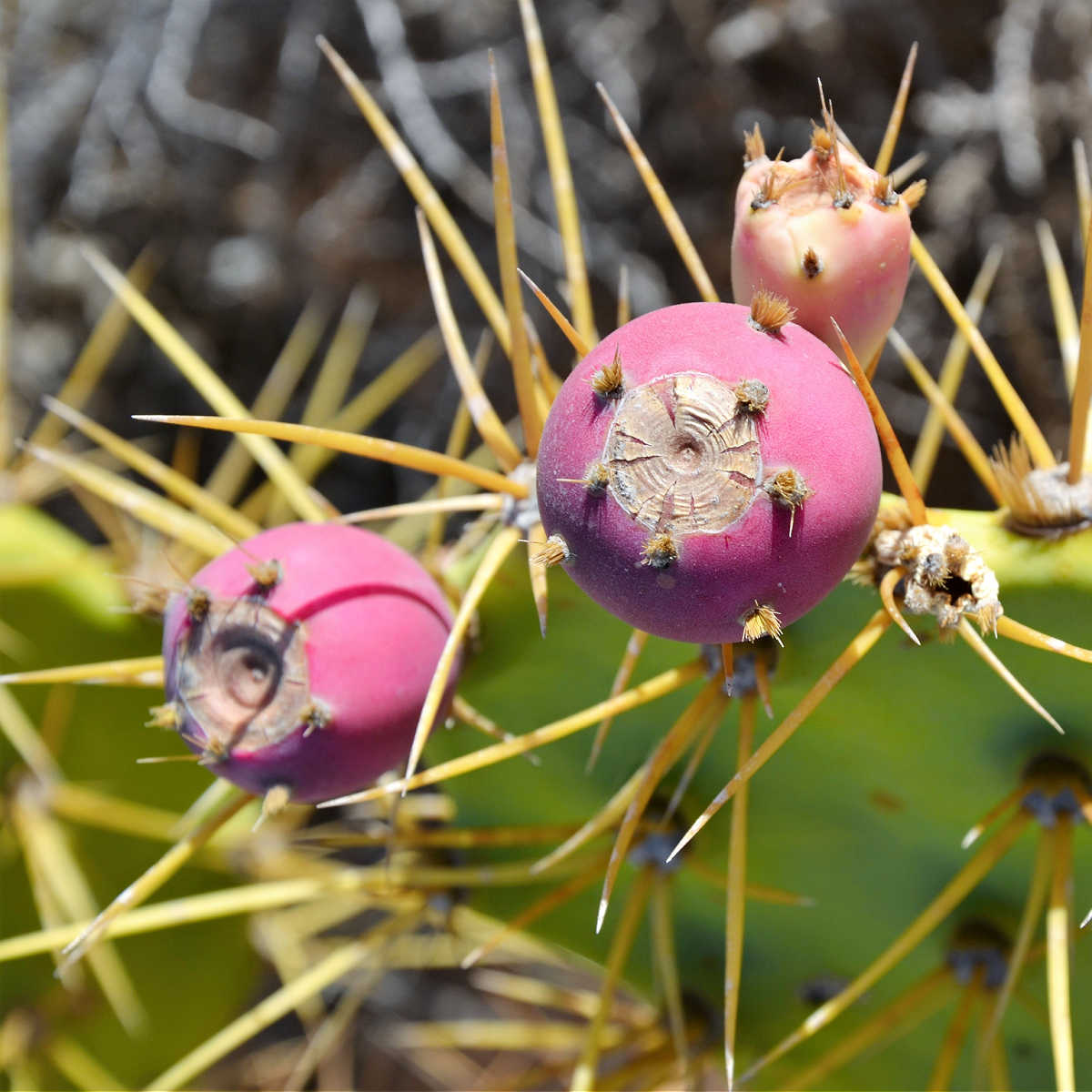
Cactus (Prickly) Pear
I’ve seen cactus pear growing a lot in Cyprus and Malta as this fruit loves warm countries. Cactus Pear fruit is rich in vitamin C and magnesium, potassium and calcium.
They can be quite sweet and can be eaten fresh (just peel the skin). Cactus pear is often made into syrups, jams, jellies and even turned into flavoured alcohol.
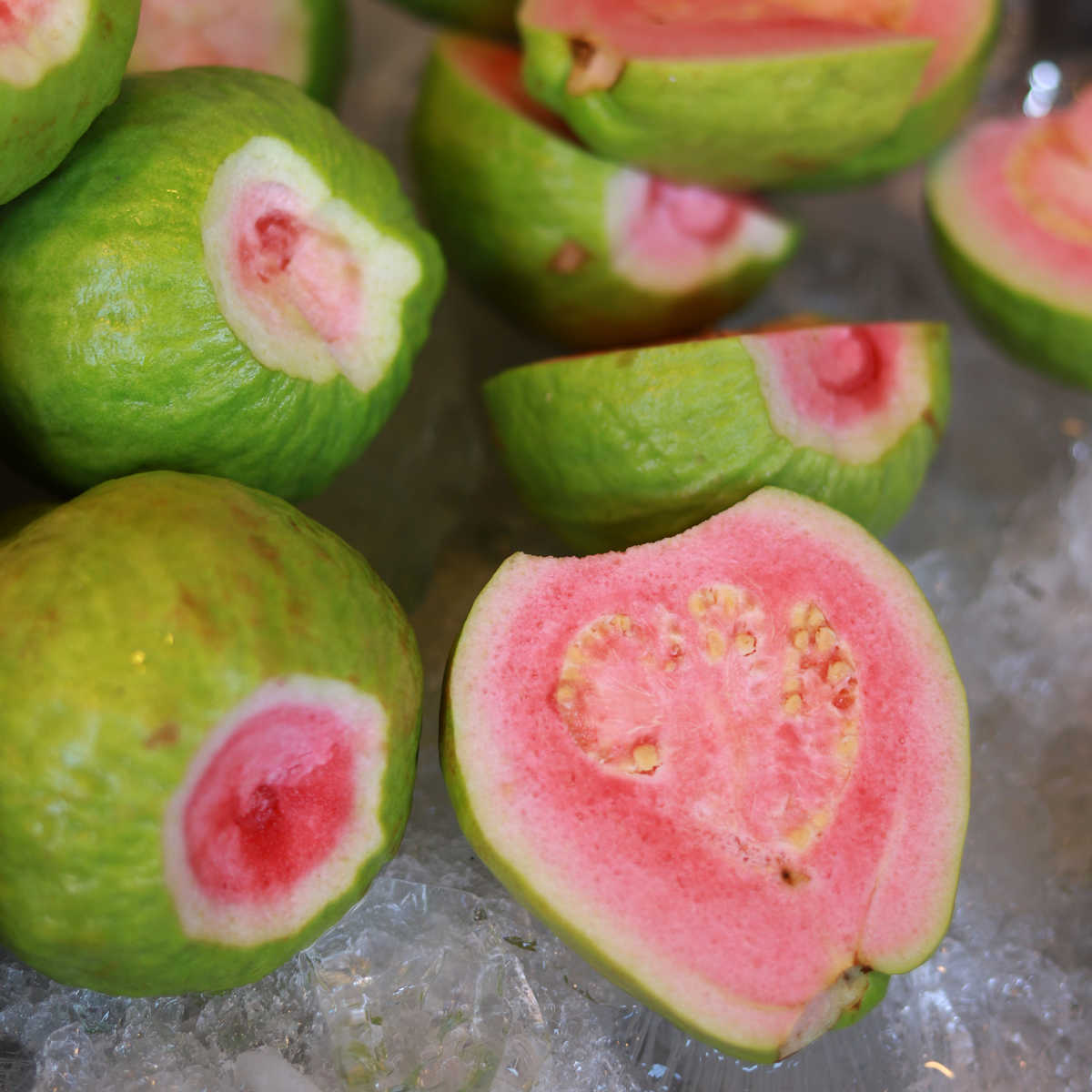
Pink Guava
Guava is bright green on the outside, but a lovely pink colour on the inside (with white flesh around). When ripe guava is very soft, juicy and tastes a little bit like a strawberry.
It’s native to Central America (Mexico in particular) and also grows in South America and the Caribbean.
You can eat guava fresh, as it is, or add to your smoothies or fruit juices. Guava can be also made into jam, syrup and it’s often used to flavour barbecue sauces as it’s a good company to meat and other savoury dishes.
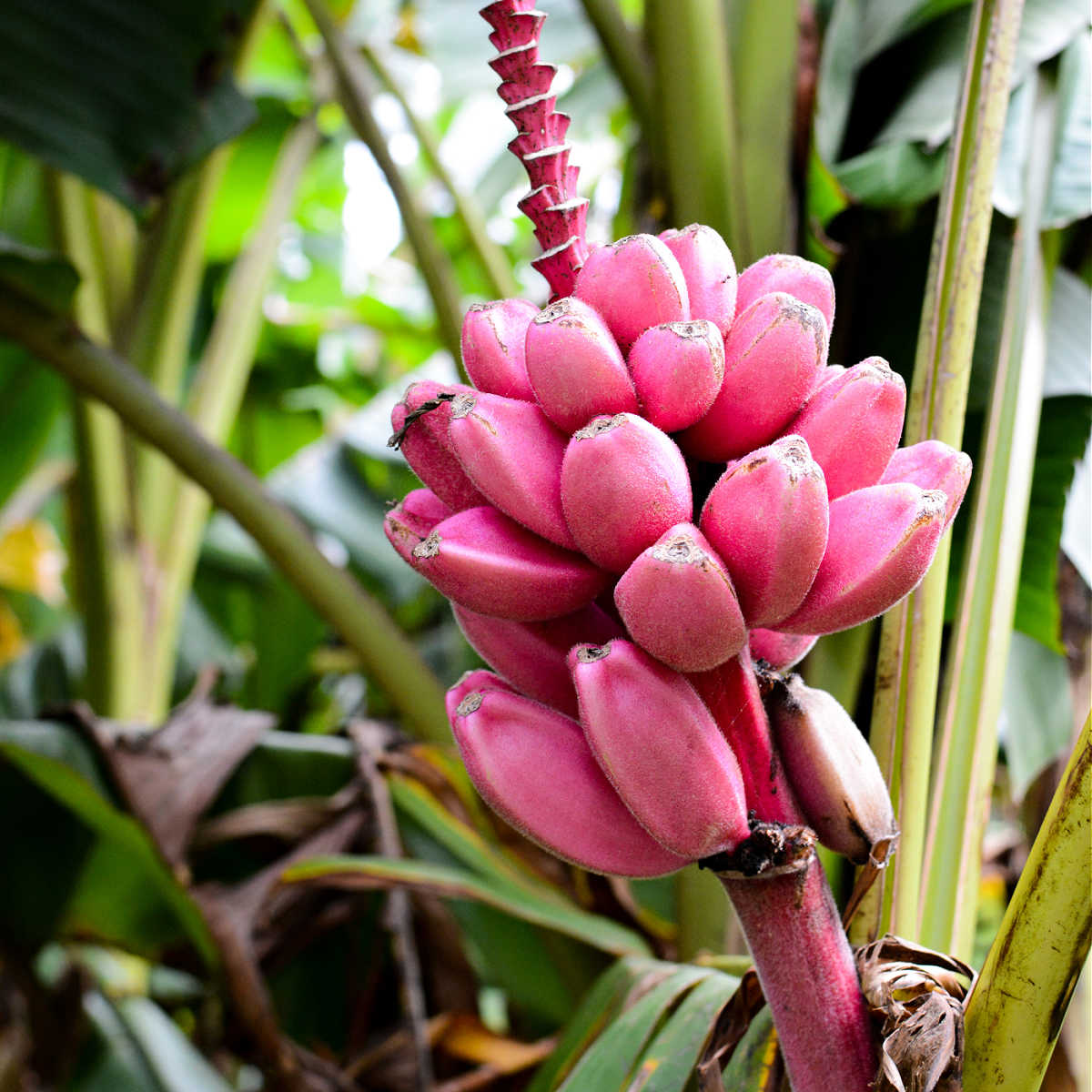
Pink Banana
Pink bananas are also known as ‘hairy bananas’ because they have fuzzy hair. Their outer skin is pink, but they are white or pale yellow inside.
They are native to the Himalayas and Assam and grow in the wild. They are much smaller than regular bananas – only about 8 cm (3 inch) long. They have black seeds, which shouldn’t be eaten.
Rose Apple
Rose apple also known as Java Apple or Wax Apple, is another tropical pink fruit, this time from Greater Sunda Islands, Malay Peninsula and Nicobar Islands. The fruits look more like misshappen bells or pears than apples and they certainly don’t taste like apples. The flavour is more like a watermelon and pear mixed together.
The fruit has different varieties and different colours, so as well as the pink, you can also see dark reds, black and white colours.
It can be eaten fresh, but it’s also used in salads, for pickling or to add to meat dishes.
Pinkcurrant – Gloire de Sablon
Pinkcurrants have very light pink skin and taste much tartier than blackcurrants. I remember my grandad grew them in the garden and we used to eat them straight from the tree bush.
We’d also use them for making jams and adding them to cakes instead of other fruit.
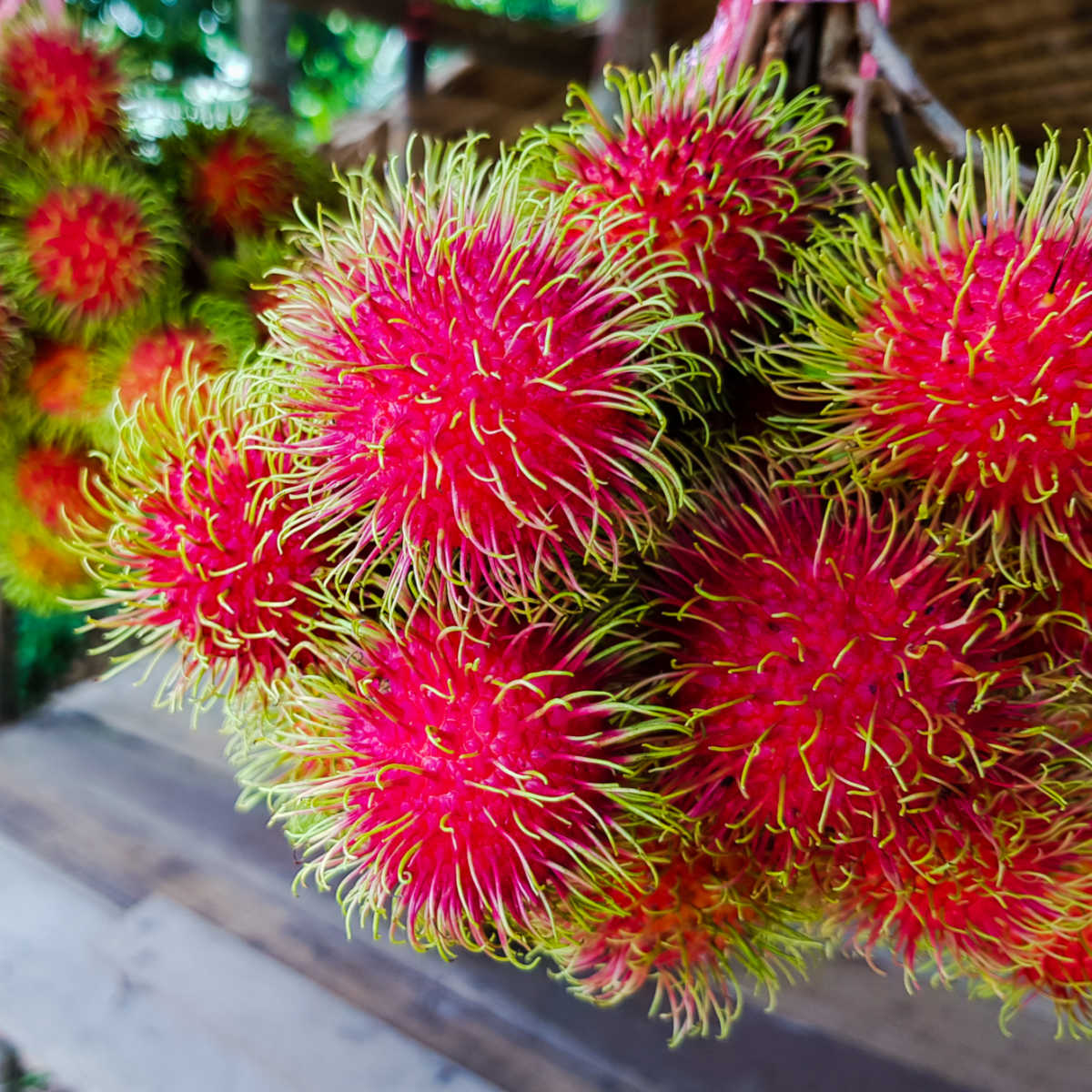
Rambutan
Rambutan is another fruit that is bright pink on the outside and white inside. Rambutan is native to Southeast Asia, Hawaii and Australia. The flavour is very similar to lychees and they are also similar in size.
Yangmei (Chinese Bayberry)
These pink fruits look like little gems and they have pink colour on the outside but also slight pink undertones inside the fruit. To compare the taste, yangmei taste like strawberry and cranberry with the sharpness of pomegranate.

Mangosteen
Mangosteen is dark pink on the outside and also has deep pink outer flesh on the inside with a white middle. It tastes a bit like a strawberry with a hint of pineapple and the sweetness of lychees.
Mangosteen is a tropical fruit originally from Southeast Asia. Mangosteen can be eaten raw, but it’s also nice in a smoothie or fruit salad. The fruit can also be used for ice creams or sorbets and various desserts.
Lilly Pilly Berries
These pink berries have such a fun name; no wonder that they are very popular in their native Australia! The berries have an amazing pink colour, they are oval in shape and grow to 1-2 cm (about 1/2 – 3/4 inch).
Lilly Pilly Berries are often made into jelly, jams, syrups, but also dried and candied and used for baking cakes. Their taste is somewhere between strawberry, plum and cranberry, although they taste quite sharp and tarty.
Sampinit
Sampinit is a variety of raspberry, which has been grown in the wild. It originally comes from the Philippines, but it can be seen in other warm countries too. Sampinit’s flavour is very close to the regular raspberry, but they are not as sweet as the raspberries.
You can use sampinit in the same way as raspberry, so wherever your recipe calls for raspberry you can just swap them for sampinit.
Pink Pineapple
Pink Pineapple (Pinkglow) is a copyrighted name for a new crossbreed of pineapple, that’s grown only in Costa Rica. This pineapple, which is visibly pink inside (instead of the usual yellow) tastes sweeter than regular pineapple.
Because the pink pineapple takes around two years to properly mature, they are also very pricey! The chances of finding this fruit in your local greengrocer’s is very slim, as these need to be ordered specially from just one producer – Del Monte from Costa Rica.
Del Monte has been working on this new type of pineapple since 2005 and finally introduced the pink pineapple at the end of 2020.
The fruit originally retailed at nearly $50 but now can be purchased at slightly lower price starting from $29 through official retailers.
The pink pineapple arives in a pretty gift box and it’s always sold without it’s pineapple crown. This is partly because the pineapple is harvested by hand and the farmers need the crowns to replace the growth, but also to make sure that nobody can grown their own pink pineapple.
If you are lucky you can also find pink pineapple at your local store, where they might be more affordable, although they would be still at least twice as much as regular pineapples. This is if you are in the USA, I’ve checked and in UK pink pineapples are not available even through a mail order!
Pink Pomelo
Pink pomelo is a citrus fruit, which is about the size of a grapefruit, but it’s green on the outside and pink inside. It’s originally from Asia and can be used and eaten in the same way as grapefruit or orange.
This article was originally written on 20 March 2020 and last updated on 11 June 2022





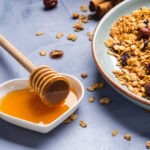

Leave a Reply